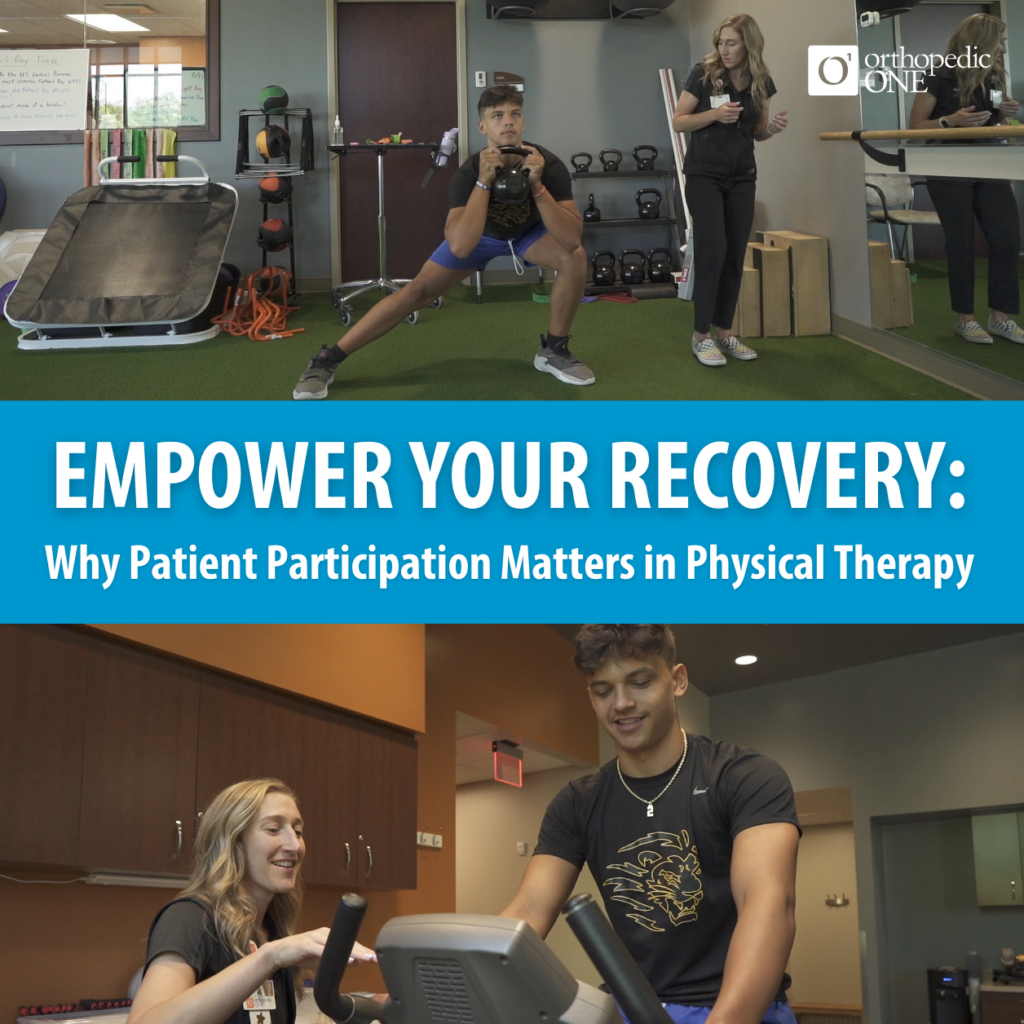Empower Your Recovery: Why Patient Participation Matters in Physical Therapy
When it comes to physical therapy, the road to recovery is a journey that requires more than just the expertise of your physical therapist. Your active participation in the process is crucial to achieving the best possible outcomes! This collaboration between patient and therapist hinges on one essential factor: execution.
Following your prescribed treatment plan may sound straightforward, but it’s often one of the biggest challenges patients face. However, understanding the importance of participation can make all the difference in your recovery journey.

Working as a Team
Creating a Plan with Your Physical Therapist
Every physical therapy program is designed to meet your individual needs and goals. But to truly reap the benefits, it’s crucial to follow the plan as prescribed. Buying into the plan means dedicating yourself to the exercises and routines outlined by your therapist. By doing so, you’re not just participating in your recovery—you’re optimizing it. The more committed you are, the better your chances of a faster, more effective recovery.
Preventing Re-Injury
One of the primary goals of physical therapy is to restore strength and mobility while preventing future injuries. Skipping days, however, can set you back significantly. When you skip exercises or fail to follow instructions, you increase your risk of re-injury. This not only prolongs your recovery time but also makes it harder to return to your regular activities. By staying committed to your program, you help protect your body from setbacks and ensure a smoother path to recovery.
Enhancing Quality of Life
Physical therapy is about more than just healing; it’s about regaining the ability to enjoy the activities you love—your engagement in the process plays a pivotal role in this process. As you follow your program, you’ll likely notice a reduction in pain and an increase in mobility, which allows you to fully participate in the moments that matter most to you. In short, engagement with the plan is your ticket to leaving the pain and limitations of injury behind.
Reducing Long-Term Costs
Investing in your recovery today can save you from additional medical expenses down the road. Patients who follow their physical therapy plans tend to see lasting improvements, reducing the likelihood of needing further treatment. On the flip side, not following the plan can lead to prolonged recovery, additional injuries, and potentially costly medical interventions. Involvement with your program isn’t just beneficial for your health; it’s also a smart financial decision.
Tips for Sticking to Your Program
Physical therapy can be tough, and sticking to a routine isn’t always easy. But with a few strategies, you can make your plan more manageable—and even fun!
- Set Realistic Goals: Recovery is a process, not an overnight fix. Your therapist will help you set achievable goals and gradually push you to get stronger.
- Make it Enjoyable: Incorporate things that will make your exercises fun. Listen to your favorite music, get a friend involved, or plan exciting activities after your sessions to keep you motivated.
- Reward Your Progress: Celebrate your milestones! Try treating yourself to something special, like new exercise clothes or an at-home spa day, to make your recovery feel more worthwhile.
- Lean on Your Support System: Surround yourself with people who encourage you and keep you accountable. Whether it’s friends, family, or fellow patients, a strong support system can make a big difference. At Orthopedic ONE, this includes your therapy team!
Action Steps for an Effective Outcome
Sticking to your program might sound simple, but implementing it into your daily routine can be challenging. Here are some actionable steps you can take to make your physical therapy plan easier to execute:
- Dress Comfortably: Wear loose-fitting, comfortable clothing that allows you to move freely during your exercises.
- Warm Up and Cool Down: Take the time to prepare your body before starting your exercises and cool down afterward to prevent injury.
- Keep a Journal: Your therapist will help you track your exercises, frequency, and progress. This not only keeps you accountable but also helps you see how far you’ve come.
- Communicate with Your Therapist: If you have any concerns or questions about your program, don’t hesitate to talk to your physical therapist. They’re here to help guide you through your recovery!
While engagement begins with you, we at Orthopedic ONE are here to support you and see you through at every turn. In addition to our roster of nearly 70 of the region’s top orthopedic physicians, we offer an experienced and dedicated team of therapists with specialty training in orthopedics, hand therapy, geriatrics, and sports medicine.
We put our patients first, always. And we know that confidence fuels participation, which is why we take the time to make sure you understand the why of your program and help keep you motivated throughout your recovery process. Through positive reinforcement, program adjustments, and patient-centered care, our team works to get you back to you.
Sources:
Patient Compliance with Physical Therapy Getting with the Program (Journal of Physical Medicine)